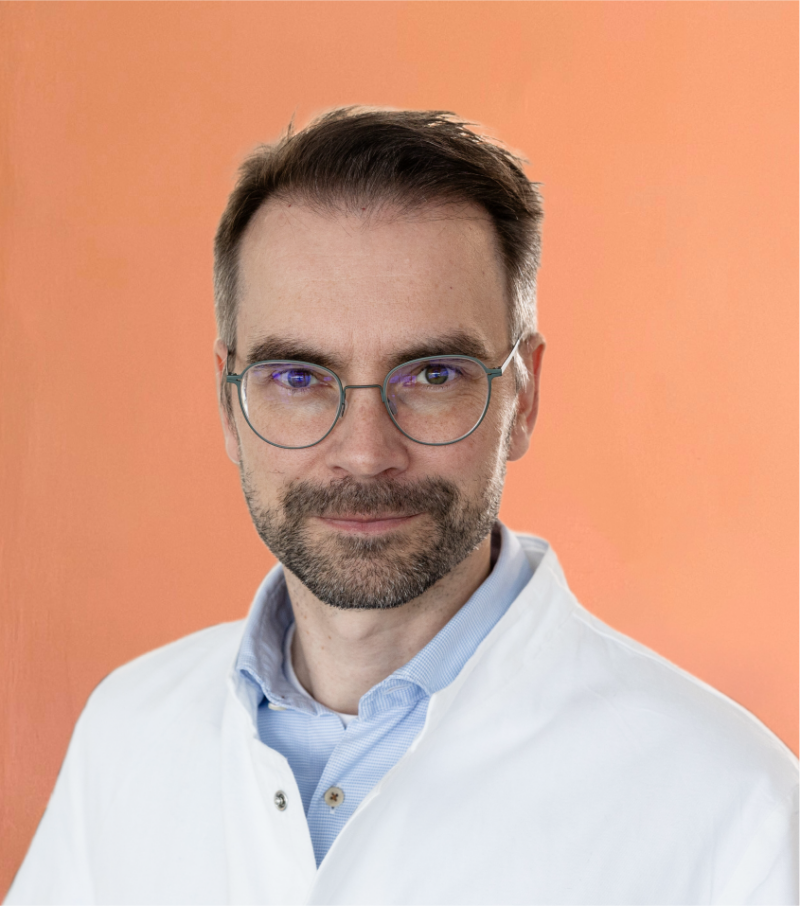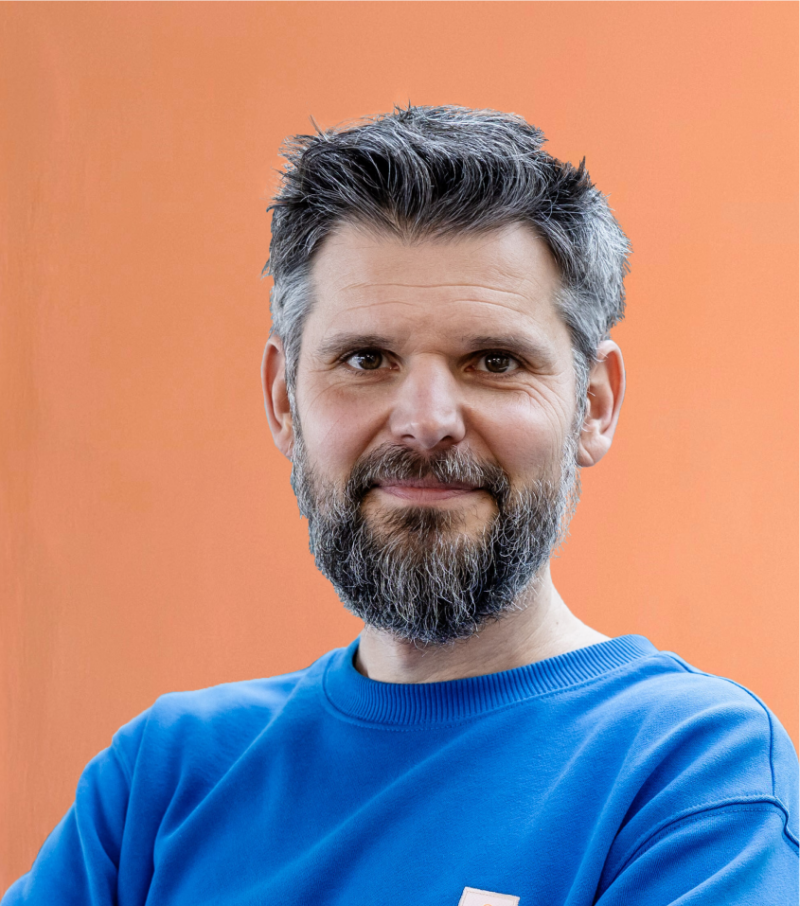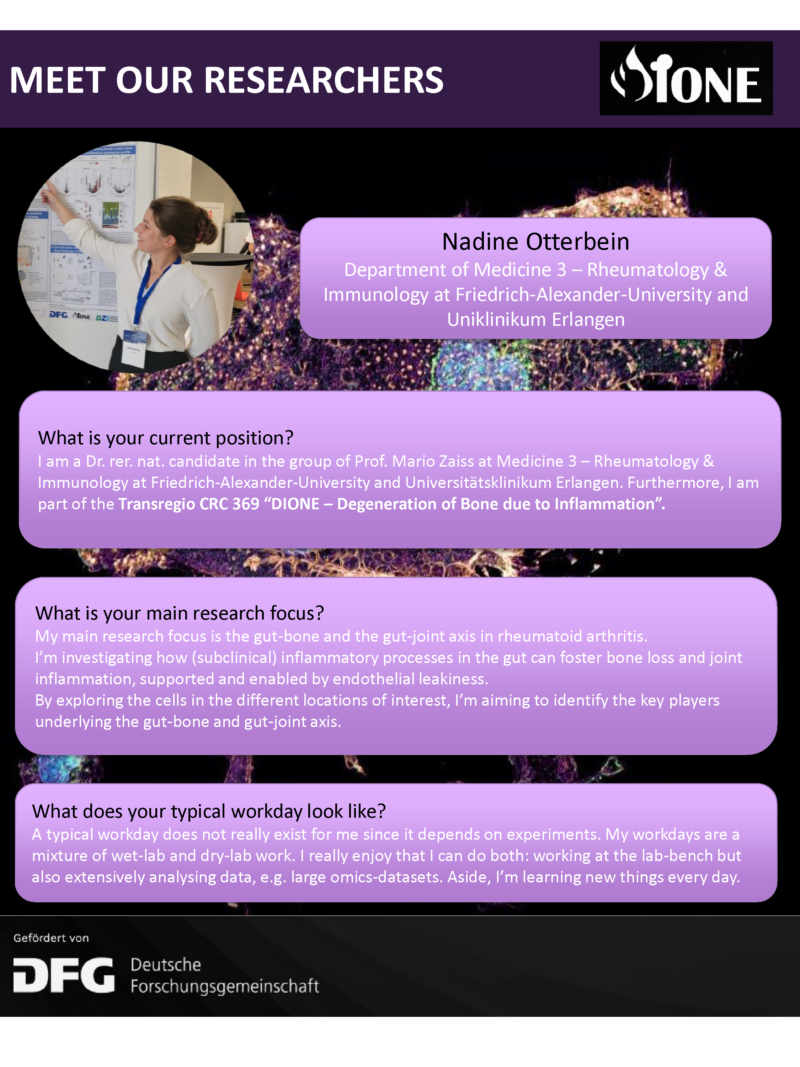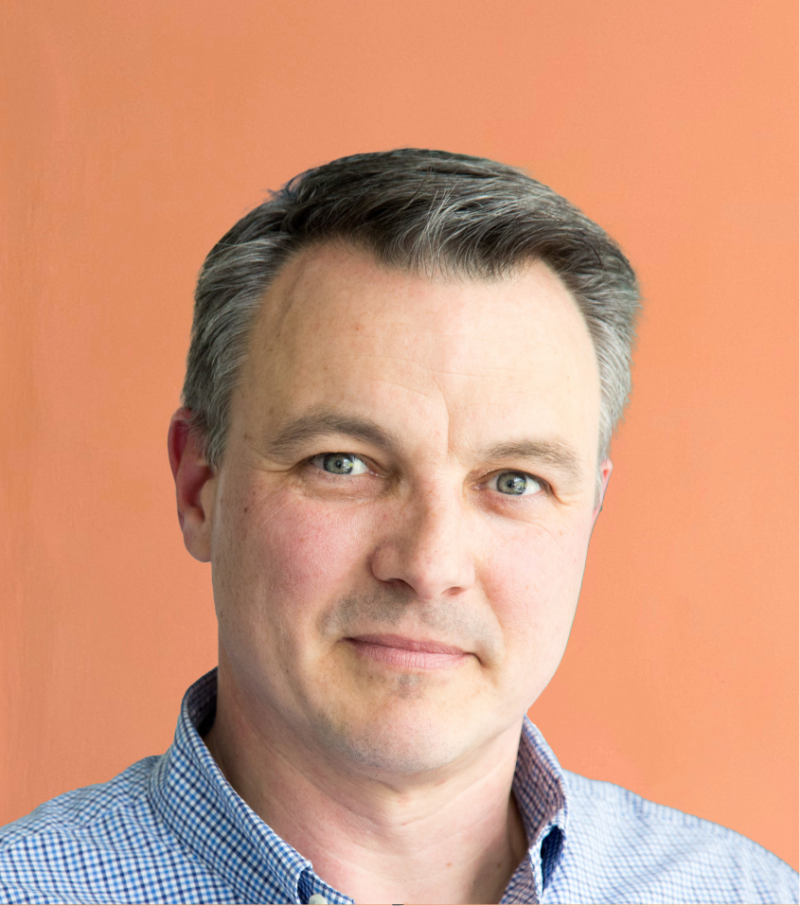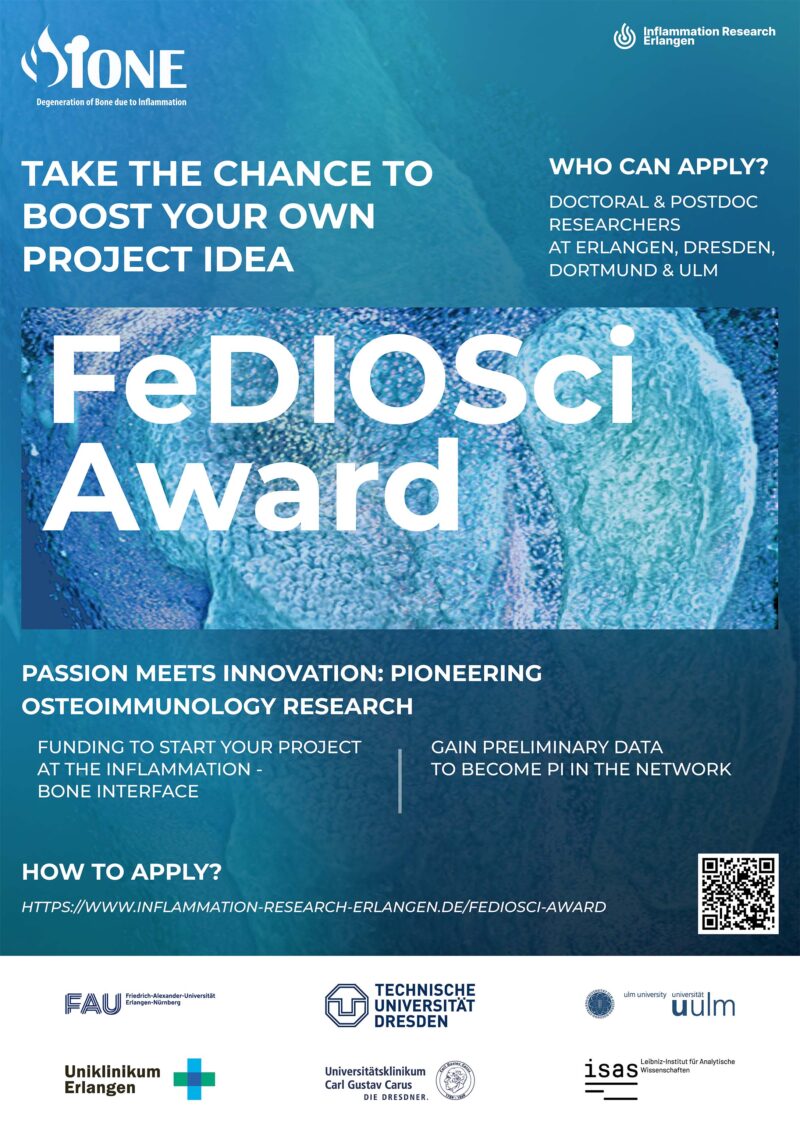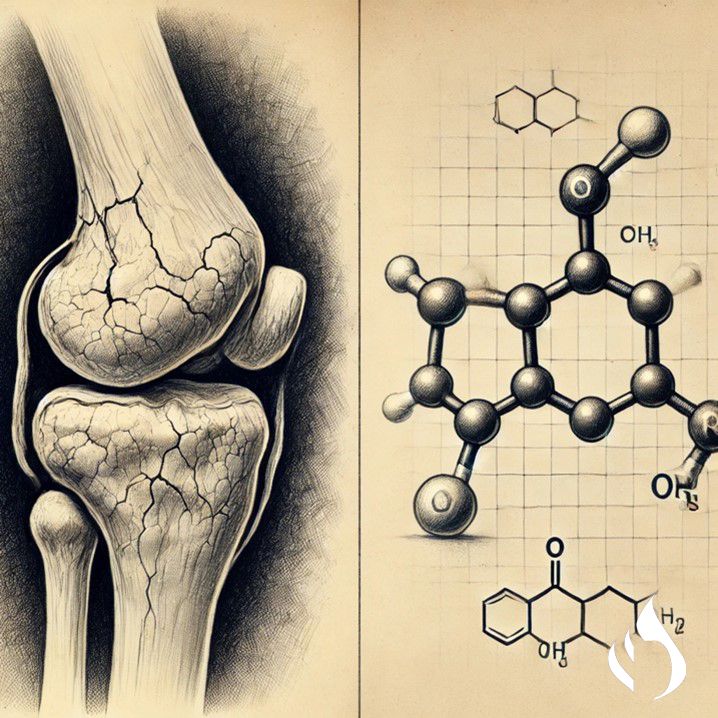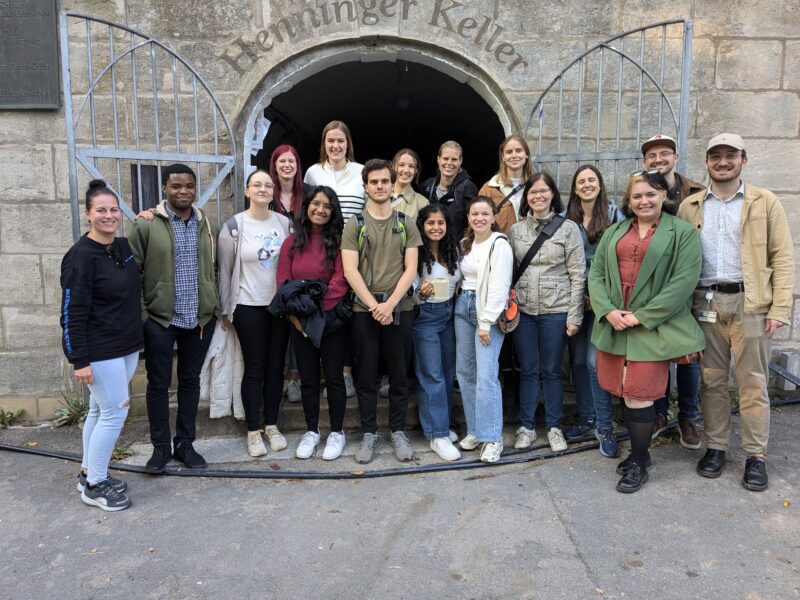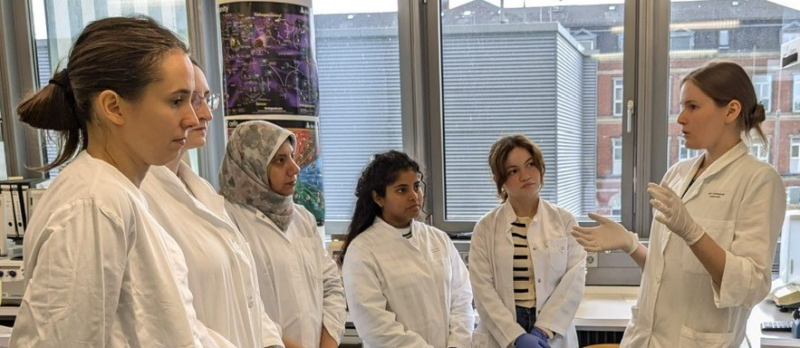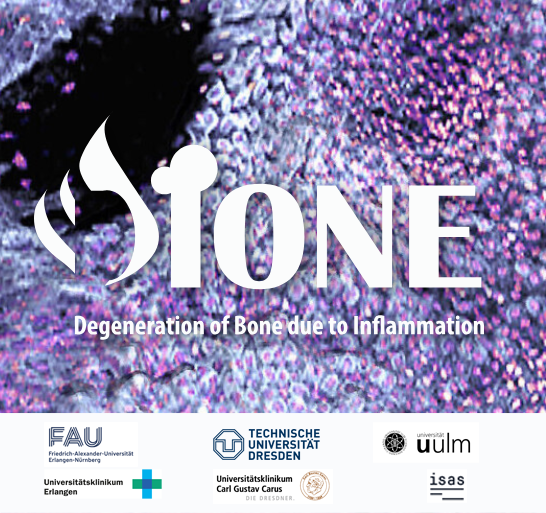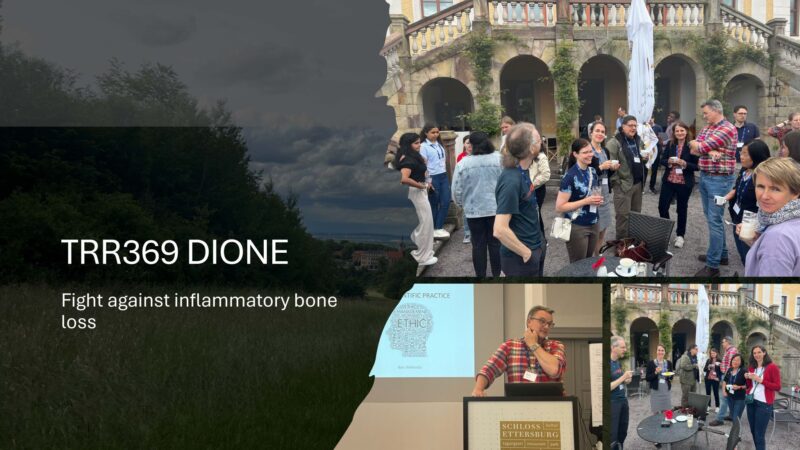Chronic inflammatory diseases occur when the immune system, usually a finely tuned network, overreacts and attacks healthy tissue. Current treatments often rely on immunosuppressive drugs, such as cortisone, which reduce immune activity but also leave the body more vulnerable to infections.
Prof. Andreas Ramming, immunologist and Deputy Director of the Department of Medicine 3 at Uniklinikum Erlangen, is taking a different approach: reactivating the body’s own cellular defense mechanisms to prevent healthy cells from being mistakenly attacked. This strategy offers new hope for conditions like rheumatoid arthritis and spondyloarthropathies, while avoiding the drawbacks of general immunosuppression.
His team was recently awarded the ERC Proof of Concept grant for this innovative strategy, marking an important milestone on the path to the first human trials.
The potential: a new class of targeted therapeutics that could change the way chronic inflammatory diseases are treated, making therapies more precise and safer for patients.
Meet our Researcher: Mario Zaiss
What is your current position?
I am Professor for Immune Tolerance and Autoimmunity at the Department of Medicine 3 – Rheumatology & Immunology at Friedrich‑Alexander‑University and Universitätsklinikum Erlangen. I also serve as the speaker of the DFG Research Training School “FAIR – Fine-Tuners of the adaptive Immune System” and co-speaker of the DFG Research Unit “PANDORA – Pathways triggering AutoimmuNity and Defining Onset of early Rheumatoid Arthritis”.
What is your main research focus?
Our research team is interested in the underlying mechanisms of the gut–bone axis, with a focus on effector molecules linking both systems. Beyond serving as energy carriers, dietary metabolites act as direct modulators of immune functions. Since immune responses both require and reshape metabolism, our work explores the interplay between immunology, metabolism, and nutrition, aiming to advance the prevention and resolution of inflammation in autoimmune diseases.
What does your typical workday look like?
A typical workday starts with a good double espresso and involves many stimulating discussions with students and project leaders on diverse scientific questions. As a group leader, I am also responsible for funding, including administrative tasks and grant applications. I also contribute to university committees with a strong focus on sustainability in research.
Meet Our Researcher: Nadine Otterbein
What is your current position?
I am a Dr. rer. nat. candidate in the group of Prof. Mario Zaiss at Medicine 3 – Rheumatology & Immunology at Friedrich‑Alexander‑University and Universitätsklinikum Erlangen. Furthermore, I am part of the Transregio CRC 369 “DIONE – Degeneration of Bone due to Inflammation”.
What is your main research focus?
My main research focus is the gut-bone and the gut-joint axis in rheumatoid arthritis. I’m investigating how (subclinical) inflammatory processes in the gut can foster bone loss and joint inflammation, supported and enabled by endothelial leakiness. By exploring the cells in the different locations of interest, I’m aiming to identify the key players underlying the gut-bone and gut-joint axis.
What does your typical workday look like?
A typical workday does not really exist for me since it depends on experiments. My workdays are a mixture of wet-lab and dry-lab work. I really enjoy that I can do both: working at the lab-bench but also extensively analysing data, e.g. large omics-datasets. Aside, I’m learning new things every day.
Meet our Researcher – Ben Wielockx
What is your current position?
I am Professor for Inflammatory diseases and Group Leader at the Institute of Clinical Chemistry and Laboratory Medicine at the University Hospital Carl Gustav Carus, TU Dresden. I also lead the Experimental Center, which includes responsibility for the central animal research facility at the Faculty of Medicine.
What is your main research focus?
My research group studies hypoxia signaling pathways, with a focus on the functions of hypoxia-inducible factors (HIFs) and erythropoietin (EPO) in inflammation, vascular function, and bone homeostasis. Using in vivo mouse models, we study how systemic signals influence immune responses and tissue integrity in chronic disease settings.
What does your typical workday look like?
My day usually starts early with management of the operational structure and personnel at the Experimental Center. I then divide my time between supervising research in the lab, discussing data with Ph.D. students and postdoctoral researchers, and strategic planning. I integrate writing, reviewing, and mentoring throughout the week, whenever focused time allows.
Nachhaltigkeit in der Wissenschaft: Zaiss Lab erhält My Green Lab Zertifizierung
As part of TRR369 DIONE, we’re proud to share that the Zaiss Lab at Uniklinikum Erlangen of
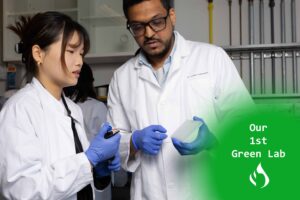
has been awarded the My Green Lab Certification – a benchmark for sustainable practices in scientific research environments.
This certification aligns with DIONE’s mission to foster not only cutting-edge immunological research but also responsible science that meets the environmental challenges of our time. The Zaiss Lab scored particularly high in categories like team engagement, equipment efficiency, and waste reduction – with up to 94% achievement rates in core sustainability metrics.
By implementing best practices and involving all team members in the sustainability process, the lab exemplifies how collaborative research infrastructures can become role models for ecological responsibility.
We congratulate the entire team for their outstanding efforts and encourage other labs within our network to follow their lead.
#SustainableResearch #MyGreenLab #TRR369 #DIONE #Immunology #GreenLabs #ResponsibleScience
FeDIOSci Award – Apply now!
We are honouring the FeDIOSci Award for the first time this year.
This funding supports innovative project ideas from young scientists at the interface of bone and the immune system at the Erlangen, Dresden, Ulm and Dortmund sites.
It is an opportunity for young scientists to receive financial support to work on an innovative project idea within osteoimmunology. In this way, preliminary data can be obtained that will ideally lead to an own project within the framework of the second funding period of DIONE.
We are looking for project approaches that ideally lead to an expansion of DIONE’s research activities in terms of content, that dare to think outside the box, have future potential and are translationally orientated. This year, one to two ideas will be supported with a one-off grant totalling 8,000 euros for material resources or support for personnel costs.
Applications are open to doctoral candidates and postdoctoral researchers who are employed at one of the universities or research institutions participating in DIONE, whose doctorate is expected to be completed in 2026 or whose doctorate was completed no more than 6 years ago at the time of the call for applications. In accordance with the DFG guidelines for early career researchers, parental leave of two years per child will be taken into account.
Take the opportunity and apply for your own mini-project.
Submit your project idea here
Application deadline: Mai, 15th 2025
If you need further information, please do not hesitate to contact the DIONE branch office
New paper published: L-arginine as a booster of bone health?
Could a common amino acid prove to be a potential therapeutic agent for the reduction of arthritis and bone loss?
Rheumatoid arthritis (RA) affects millions of people worldwide, causing joint pain and bone loss due to the excessive activity of bone-resorbing cells, known as osteoclasts. The latest research findings indicate that L-arginine, a common amino acid, may play a pivotal role in the inhibition of this destructive process. It was discovered that L-arginine has the capacity to „reprogram“ osteoclasts, effecting a transition in their energy production from a process that is conducive to bone loss to one that is inhibitory. By modifying the cells‘ metabolism, L-arginine effectively reduces osteoclast formation and activity, resulting in reduced bone erosion. This discovery provides a potential avenue for developing new treatments for RA that utilise the properties of this amino acid to protect our bones. Could L-arginine supplements become a simple and effective strategy to combat arthritis and preserve bone health? Our findings suggest that this is a possibility that warrants further investigation.
Read more here ⬇
https://doi.org/10.1136/ard-2022-223626
Wrapping up an Incredible TRR369 DIONE Student Training Week! 🎉
What an amazing week in Erlangen it’s been! 💡 From insightful lectures to hands-on training, the participants dove deep into cutting-edge osteoimmunology and inflammation models, building their knowledge and skills. 🔬🤩 The combination of learning, networking, and exchanging ideas across disciplines made this a truly special experience.
We capped it all off with a fantastic farewell dinner 🍽️, but this is just the beginning. Excitement is already building for the next DIONE Workshop, set to take place in Dresden in 2025! 📅
Big things are on the horizon—stay tuned for more updates from this dynamic research community!
Some impressions of the workshop
Start of the 1st DIONE Trainingsweek
We’re thrilled to announce the kickoff of the #TRR369 #DIONE Student Training Week focused on #inflammation models! 🧬
Young scientists are coming together to deepen their knowledge and skills in cutting-edge osteoimmunology research. 🧑🔬👩🔬
With a focus on understanding the complex link between inflammation and #bone #health, this week is all about hands-on learning, human inflammatory diseases and collaboration across disciplines. 🌍🔬
Stay tuned for updates and breakthroughs from these rising stars in research! ✨💡
DIONE is Here: Unlocking the Future of Bone Health!
Have you ever wondered how inflammation affects more than just swelling or pain? Introducing DIONE—a groundbreaking research consortium that’s changing how we understand the connection between inflammation and bone health.
What is DIONE?
DIONE, or Transregio (TRR) 369, is a cutting-edge research network funded by the German Research Foundation (Deutsche Forschungsgemeinschaft (DFG) – German Research Foundation). With a team of 30 top scientists spread across 19 subprojects, DIONE brings together expertise from key research hubs at FAU Erlangen-Nürnberg, Technische Universität Dresden, Leibniz-Institut für Analytische Wissenschaften – ISAS – e.V., and Universität Ulm. Together, they are pushing the boundaries of scientific discovery.
So, what does DIONE do?
DIONE’s mission is to explore how inflammation affects bone health, particularly through a field known as osteoimmunology. By studying how the immune system and bone tissue interact, the team aims to uncover the hidden mechanisms that link inflammation to conditions like osteoporosis.
When inflammation strikes, it doesn’t just cause pain—it prompts immune cells to release powerful signals like cytokines. These signals disrupt the delicate balance between cells that build bone (osteoblasts) and those that break it down (osteoclasts). Over time, this can lead to serious conditions like bone loss and fractures, particularly in people with chronic inflammatory diseases like rheumatoid arthritis, periodontitis, and psoriatic arthritis.
Why does DIONE matter?
Osteoporosis is already a global health challenge, affecting over 200 million people worldwide. But what if inflammation is a bigger part of the story than we thought? DIONE is here to fill that knowledge gap by identifying the molecular pathways that drive bone loss in inflammatory diseases.
By collaborating across disciplines—biology, clinical research, and bioinformatics—DIONE is paving the way for new, innovative treatments that could dramatically improve the quality of life for patients dealing with inflammation-driven bone damage.
Join Us on This Journey!
DIONE isn’t just about research—it’s about reshaping the future of bone health. Stay tuned as we dive deeper into the science behind inflammation and bone degeneration, and follow us for updates on how we’re working to make a difference in millions of lives.
TRR369 DIONE Retreat 2024
We are thrilled to share highlights from the first retreat of our consortium, TRR369 DIONE DFG! On June 17th and 18th, our incredible team of researchers gathered to discuss groundbreaking advancements and the future of our research.
Key Highlights:
-
- Engaging presentations on cutting-edge research.
- Collaborative sessions fostering innovation
- Visionary discussions on the future of our field.
This retreat not only strengthened our collective vision but also reinforced our commitment to driving impactful research and innovation to fight against inflammatory bone loss. We are excited about the journey ahead and the transformative potential of our work.
A huge thank you to all participants for their invaluable contributions and enthusiasm.
Stay tuned for more updates and breakthroughs from TRR369 DIONE! 🚀
Ipsum
viverra quis, feugiat a, tellus. Phasellus viverra nulla ut metus varius laoreet. Quisque rutrum. Aenean imperdiet. Etiam ultricies nisi vel augue. Curabitur ullamcorper ultricies nisi. Nam eget dui. Etiam rhoncus. Maecenas tempus, tellus eget condimentum rhoncus, sem quam semper libero, sit amet adipiscing sem neque sed ipsum. Nam quam nunc, blandit vel, luctus pulvinar, hendrerit id, lorem. Maecenas nec odio et ante tincidunt tempus. Donec vitae sapien ut libero venenatis faucibus. Nullam quis ante. Etiam sit amet orci eget eros faucibus tincidunt. Duis leo. Sed fringilla mauris sit amet nibh. Donec sodales sagittis magna. Sed consequat, leo eget bibendum sodales, augue velit cursus nunc,
Lorem ipsum dolor sit amet, consectetuer adipiscing elit. Aenean commodo ligula eget dolor. Aenean massa. Cum sociis natoque penatibus et magnis dis parturient montes, nascetur ridiculus mus. Donec quam felis, ultricies nec, pellentesque eu, pretium quis, sem. Nulla consequat massa quis enim. Donec pede justo, fringilla vel, aliquet nec, vulputate eget, arcu. In enim justo, rhoncus ut, imperdiet a, venenatis vitae, justo. Nullam dictum felis eu pede mollis pretium. Integer tincidunt. Cras dapibus. Vivamus elementum semper nisi. Aenean vulputate eleifend tellus. Aenean leo ligula, porttitor eu, consequat vitae, eleifend ac, enim. Aliquam lorem ante, dapibus in,



